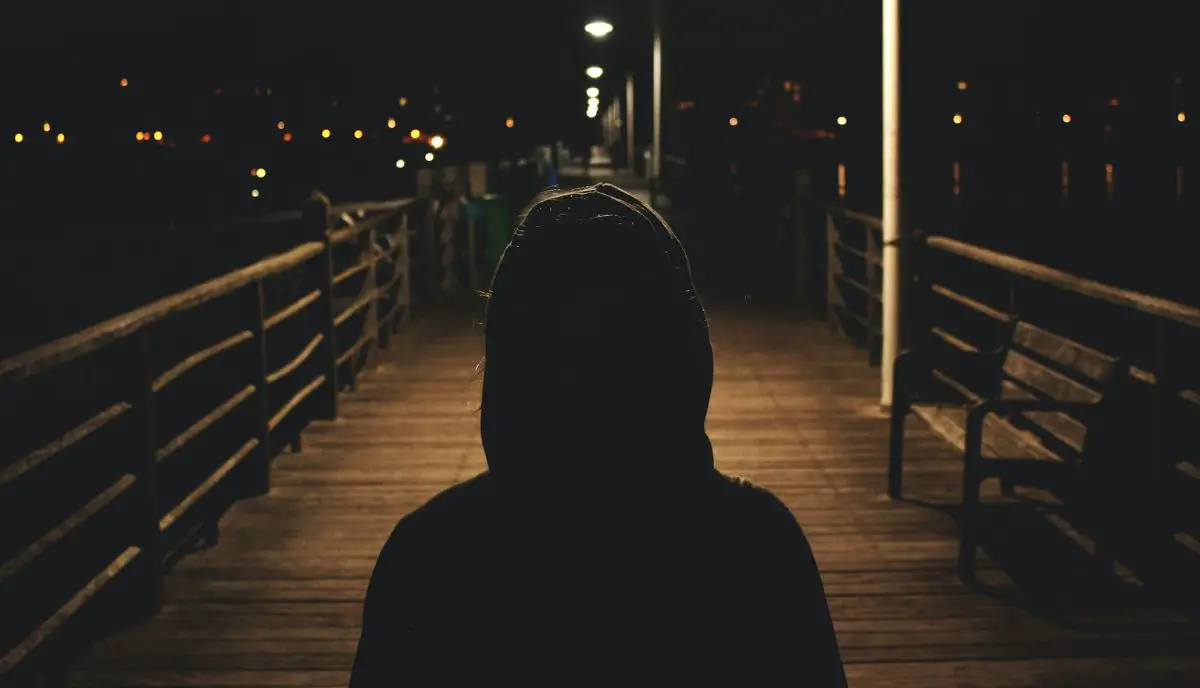Imagine a palette where each color brings to life a different aspect of our emotions. Today, we delve into the darker side of this spectrum, exploring the colors that represent fear.
From the deep, consuming black to the alarming red, we uncover how these hues mirror our innermost anxieties and fears.

Colors That Represent Fear
- Black
- Gray
- Purple
- Chartreuse
- Red
Black

Have you ever felt a shiver down your spine when you’re engulfed in darkness? That’s the power of black, the most dominant color symbolizing fear. Black, in its depth and vastness, mirrors the unknown.
Imagine a pitch-black night where anything could be lurking unseen. It’s not just the absence of light; it’s the absence of certainty, making black a color that can imprison you in your own mind.
Moreover, the color black symbolizes the end or death, a universal fear for many. It represents the finality and mystery of what lies beyond life, a concept both fascinating and terrifying. It’s the color of mourning in many cultures, a visual representation of loss and the unknown journey that follows.
In a more modern context, black can also symbolize the fear of technology and the unknown implications of its rapid advancement. Think of the “black mirror” of our screens, a portal to a digital world that is vast and, at times, overwhelming and frightening.
In art and design, the use of black can create an atmosphere of suspense and foreboding. It can swallow light, create shadows, and distort perception, playing tricks on the mind and fueling our innate fear of what we cannot see or understand.
Gray

Think of a cloudy, overcast sky, the color of ambiguity and uncertainty. Gray isn’t just sadness; it’s the color of fear when it’s not stark but lingering, like a subtle dread of what tomorrow might bring.
Gray is neither black nor white. It’s an unsettling in-between. It’s the color of ambiguity. When you see gray, it’s as if the world lacks clarity. Everything seems undecided and unclear.
Gray also speaks to a deeper fear. It’s the fear of getting lost in life’s monotony.
Imagine looking at endless gray walls every day. It’s not just boring. It’s suffocating. Gray represents a life without change, without color. It’s the fear of a future that’s just more of the same.
Purple

Now, let’s talk about purple. You might not think of purple as a color that represents fear. But it can be unsettling. Lighter shades of purple often feel mysterious. They’re not just pretty. They hint at something unknown.
Purple is a mix. It combines the calmness of blue with the intensity of red. This mix creates a unique tension.
It’s like standing at a crossroads, unsure of which path to take. Purple embodies this conflict. It’s calm and chaos at the same time.
Think of a magician’s cloak. It’s intriguing, but also slightly alarming. What secrets does it hide? Purple is like that. It’s the color of the unexplained. It’s the fear of what’s hidden, of what might be lurking just out of sight.
Purple is the kind of color that makes you wonder, that keeps you guessing. And sometimes, that unknown is the most unsettling fear of all.
Chartreuse

This color is a mix of green and yellow and you might not link it to fear at first. But it has an unsettling effect. Chartreuse isn’t a natural shade. It looks almost toxic.
It’s bright, yet it hints at danger. Chartreuse doesn’t scream fear. Instead, it whispers of something wrong.
It’s the color that catches your eye in an odd way. Imagine a chemical spill in a lab, its eerie glow in the dim light. Or a strange, exotic plant in a dense forest, its leaves bright, unnatural chartreuse, signaling caution.
Also, it’s not a color you see every day, so this rarity adds to its unsettling nature. It’s like nature’s way of saying, “Be careful.” It’s the color you might see in a warning sign, alerting you to something out of the ordinary.
Red

Finally, red. Red is an unmistakable signal. It’s the color of danger, loud and clear. Think of the color of blood, of fire. Red is about immediate threats. It’s a color that demands attention.
When you see red, your body reacts. Your heart beats faster. You’re on high alert. It’s a primal response. Red doesn’t just suggest fear; it sparks it.
Imagine a stop sign, a fire truck, or an emergency alert. All these use red to convey urgency and danger. Red is the color that says, “Stop. Look. Beware.” It’s not subtle. It’s direct and powerful.
Red is the color of adrenaline. It’s the color that tells you to either run for your life or stand and fight. It’s hardwired into our brains as a signal of peril. In a world full of colors, red stands out as the universal sign of caution and fear.
Understanding the Spectrum of Fear
Fear, a complex and multifaceted emotion, manifests in various forms and intensities. While often perceived negatively due to its uncomfortable effects, fear plays a crucial role in human survival and decision-making.
Natural vs. Irrational Fears:
- Natural Fear: This is the instinctual response to potential threats. It’s hardwired into our biology and serves as a protective mechanism. For instance, the fear of heights keeps us from venturing too close to a dangerous edge. This type of fear is usually temporary and subsides once the threat is gone.
- Irrational Fear or Phobia: Unlike natural fear, phobias are intense, often irrational fears of specific objects or situations. They can be so overwhelming that they interfere with daily life. For example, someone with arachnophobia might be so afraid of spiders that they avoid outdoor activities.
Physical and Psychological Responses:
- Fear can trigger a range of reactions. In its milder form, it might cause unease or nervousness. In extreme cases, like phobias, it can lead to physical symptoms such as sweating, trembling, or even a panic attack. The psychological impact can be profound, affecting a person’s ability to function normally.
The Protective Role of Fear:
- Despite its discomfort, fear is essential for survival. It heightens our senses and prepares our bodies to respond to danger, whether through fight or flight. This instinctual reaction has been crucial for human evolution and survival.
Conclusion
Fear, in its natural form, is a vital emotion, guiding us away from real dangers. However, when fear escalates beyond reason, it can become a debilitating force. The diverse range of colors representing fear reflects its complexity and the varied experiences individuals have with this powerful emotion. Recognizing and understanding these nuances is key to appreciating fear’s role in our lives and addressing it effectively when it becomes overwhelming.